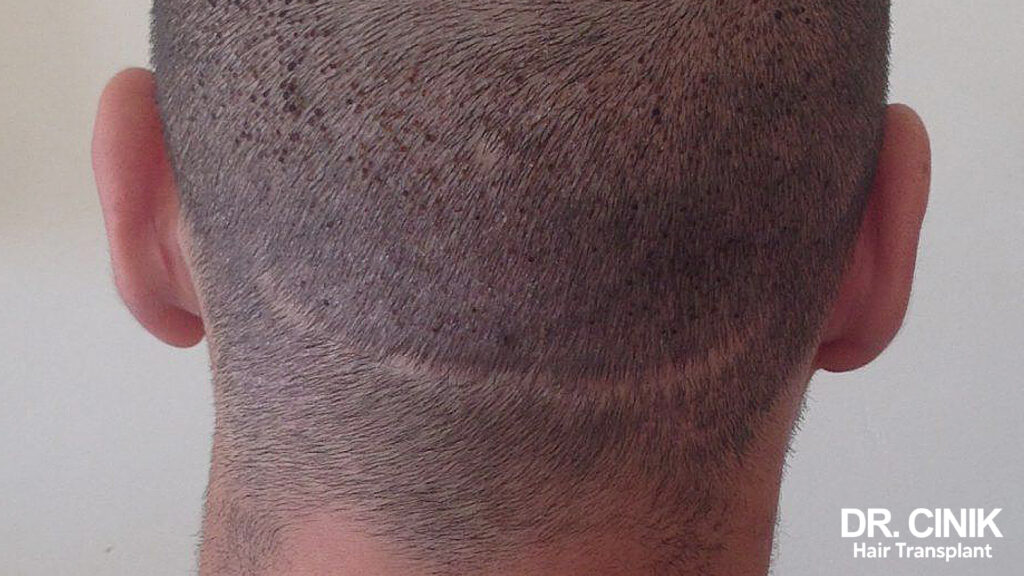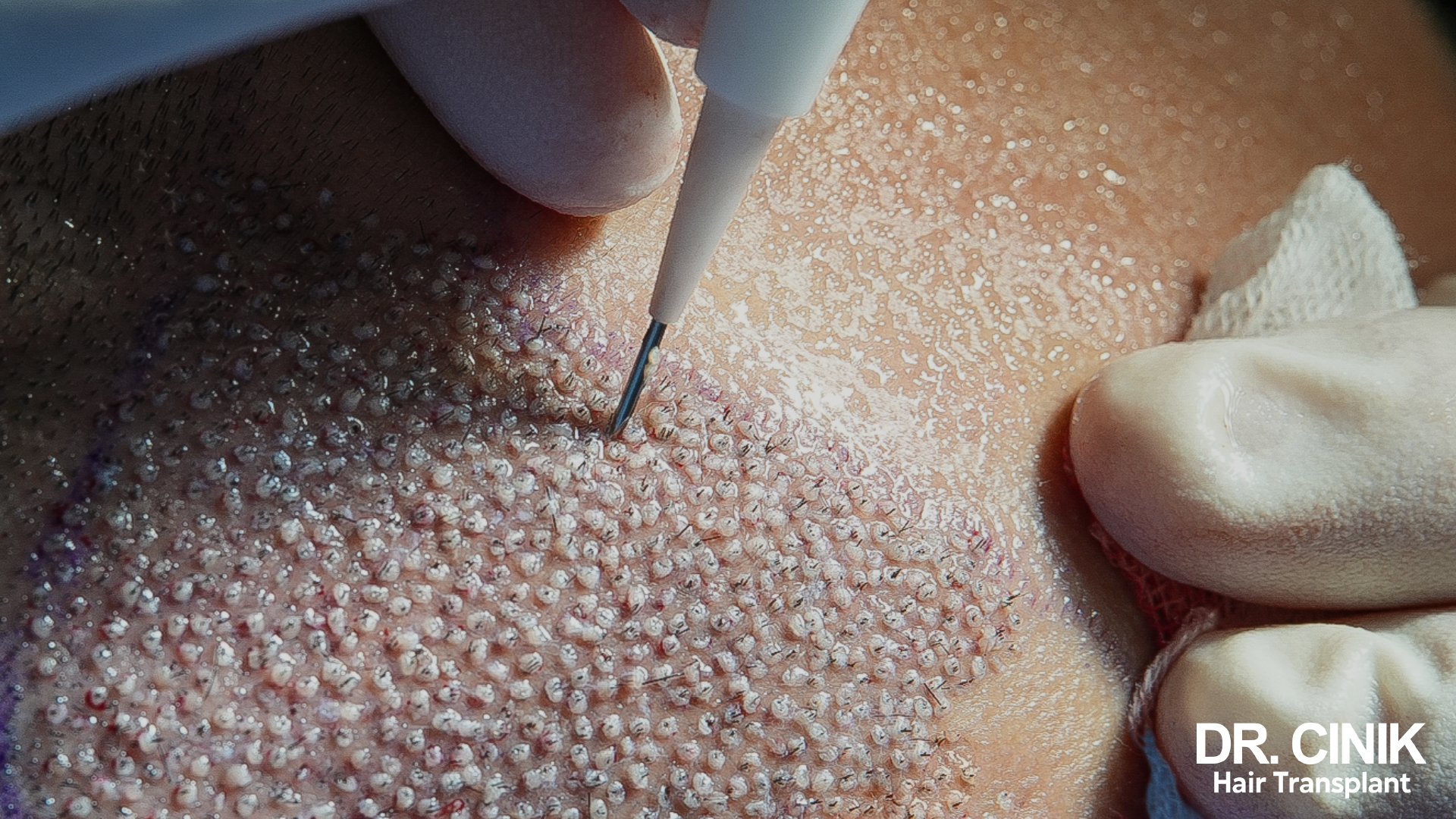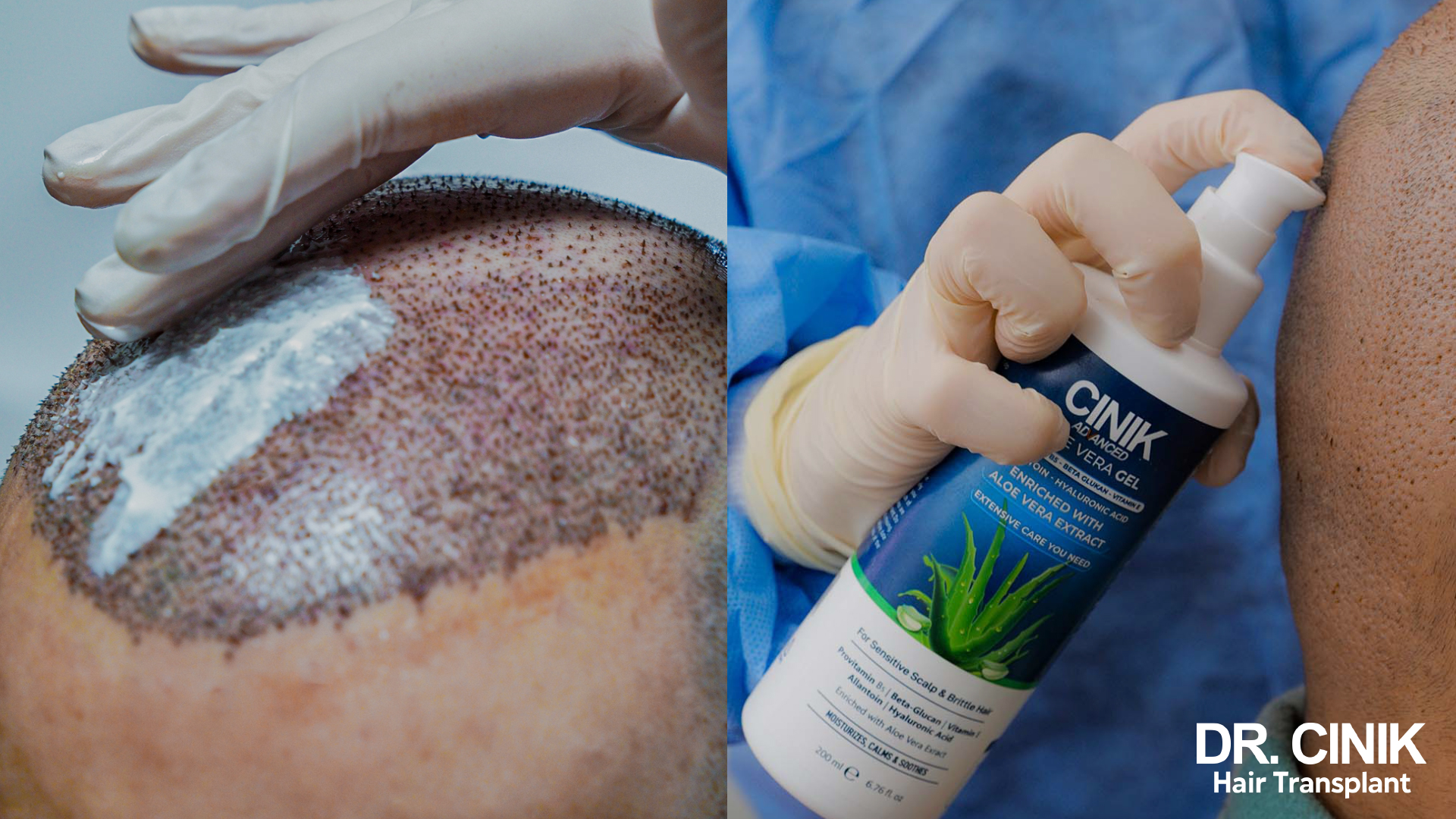Hair Transplants and Scars: Essential Information

Sommaire
Hair transplantation often raises concerns about post-operative scarring, which can discourage potential candidates. However, advancements in techniques have significantly reduced scar visibility, opening up new possibilities and reassuring patients about their post-procedure appearance. In this article, we will compare the scars left by Follicular Unit Transplantation (FUT), Follicular Unit Extraction (FUE), and Direct Hair Implantation (DHI) techniques, and provide practical advice to minimize these marks.
FUT: An Outdated Technique Leaving Large Scars
FUT, although revolutionary in its early days, is now considered obsolete due to the visible scarring it leaves behind.
How FUT Works
FUT involves removing a long strip of scalp from the back of the head and suturing the area, resulting in a large linear scar. The strip is then cut into numerous small grafts, each containing a few hair follicles, which are transplanted into the balding areas. While FUT allows for many grafts to be harvested at once, its major drawback is the unsightly linear scar that is difficult to conceal, especially with short hairstyles.

Problems Caused by FUT
Besides aesthetic concerns, FUT patients may experience pain, tightness, or itching around the scar that can persist long after the procedure. Recovery is often lengthy and requires attentive care to minimize the risk of infection or complications.
Removing a scalp strip can seriously traumatise the area, potentially impacting blood circulation and overall scalp health. This trauma may compromise future transplants, particularly if additional procedures are needed.

FUE and DHI: Modern Techniques for Invisible Micro-Scars
FUE and DHI transplant techniques represent significant advancements in hair restoration, minimizing scalp impact and providing more aesthetic results with nearly invisible scars.
The Breakthrough of FUE
FUE, a revolutionary hair transplantation technique, involves extracting individual hair follicles from the scalp using a micro-punch. This meticulous process allows for precise graft extraction while minimizing scalp damage.
The circular incisions for follicle removal are less than 1 mm in diameter and heal quickly, leaving micro-scars that are barely noticeable. Compared to FUT, FUE allows for faster, less painful recovery and a quicker return to normal activities.

DHI: The Ultimate Refinement
DHI further improves upon FUE by using a specialized pen for graft extraction and implantation, allowing for even greater control and precision.
The benefit of DHI is the further reduction of scarring to the point of near invisibility, even on shaved heads. These fine incisions promote faster healing and more effective regrowth of transplanted hair.

Advantages of FUE and DHI
The benefits of FUE and DHI extend beyond aesthetics. By reducing scalp trauma, they lower the risk of complications and accelerate healing. Patients can resume their activities shortly after the procedure with fewer restrictions and discomfort. The absence of a large linear scar offers greater freedom in post-operative hairstyle choices, an important consideration for many.
These techniques provide patients with natural results, minimal scarring, and improved post-operative comfort, making hair transplantation less invasive and more satisfying.

Minimizing Scars After a Hair Transplant
To minimize scarring after a transplant, several factors must be considered, from selecting the right clinic and technique to following post-operative instructions.
Choosing the Right Clinic and Technique
The first step is to choose a reputable clinic and an appropriate technique. FUT should be avoided in favour of FUE or, ideally, DHI, as they are less invasive and leave nearly invisible scars.
Selecting an experienced and qualified surgeon who executes the procedure meticulously is crucial for optimal results. A skilled surgeon will employ the most advanced techniques to minimise scarring.
Using state-of-the-art instruments, such as fine micro-punches or sapphire blades, helps reduce incision size and scar visibility.

Following Post-Operative Instructions
Proper post-operative care is essential. This includes avoiding sun exposure, swimming pools, and the sea during the healing process to prevent complications and promote rapid, discreet healing.
Post-operative care, such as gentle or medicated shampoos, is also crucial for promoting healing without inflammation or infection at the grafted sites.

Correcting Unsightly Scars
If scars remain visible after the transplant, various options are available. Lipofilling (fat grafting) can be used to fill scars, while micro pigmentation (medical tattooing) can camouflage scars, particularly those left by FUT.
For particularly prominent and unsightly scars, surgical excision followed by fine suturing may be considered. This involves surgically removing the scarred area and closing it precisely to reduce the aesthetic impact.

In conclusion, modern transplant techniques like FUE and DHI have revolutionised hair restoration by greatly minimizing scarring and providing superior aesthetic results compared to older methods. When performed by a skilled and experienced surgeon, a transplant leaves little to no visible marks, making the procedure extremely discreet.
The remaining micro-scars, if any, are generally concealed under the hair, even when very short. This significant advancement allows transplant recipients greater freedom in choosing their hairstyle without worrying about revealing signs of surgery.
 en
en



